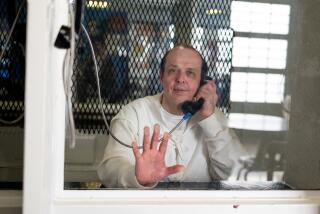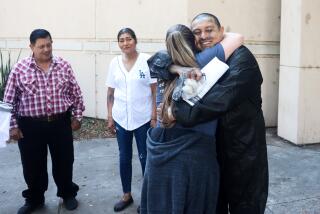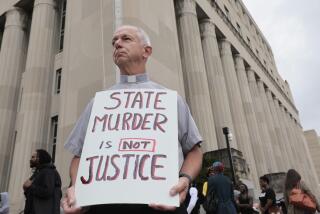Texas Study Challenges ‘Violent Behavior’ Predictions
- Share via
When Dallas prosecutors urged a jury to sentence Randall Dale Adams to death for the 1976 murder of a police officer, they presented “expert testimony” from a psychiatrist who said there was no doubt Adams would commit future violent acts, even in prison.
A life sentence would be inadequate for Adams -- a veteran with no prior record -- because he was an “extreme sociopath,” Dr. James Grigson testified. “There is nothing known in the world today that is going to change this man.”
After a dozen years in prison, Adams was freed when another man confessed to the murder. He has had a clean record ever since.
Now Adams, 55, is Exhibit A in a study to be released today that found experts witnesses’ predictions of violent behavior were wrong 95% of the time.
The study by the Texas Defender Service, a nonprofit organization that represents individuals in capital murder cases, was based on the records of 155 inmates obtained from Texas state corrections officials.
Eight of the 155 convicted killers, the study found, later engaged in behavior that resulted in serious injury. And 20% of the inmates had no disciplinary violations while in prison; the remaining 75% had “minor disciplinary infractions,” such as possessing lottery tickets, food in their cells or too many sheets.
Of the 155 inmates studied, 67 have been executed, 40 are currently on death row and the remaining 48 later had their death sentences reduced or thrown out, Adams among them.
None of the 155 killed again while in prison.
“This is a very solid and thoughtful piece of empirical research,” said John Monahan, a University of Virginia law school professor who specializes in risk assessment.
The study included every Texas case identified as having had state-sponsored testimony on future dangerousness, Monahan said, and was the first large-scale examination of prison violence among death row inmates.
Texas, which leads the nation in executions, is one of only two states where predictions of future violence are a key factor in determining whether a convicted murderer is sentenced to death. Such testimony is barred in 29 of the 38 states that have the death penalty, including California.
Shannon Edmonds, an official with the Texas County and District Attorneys Assn., said he had not had time to review the study. But he added that, as a rule, his organization took reports by the Texas Defender Service “with a grain of salt,” because “they are advocates” for ending the death penalty.
However, Dr. Sol Fulero, president of the American Psychology-Law Society, said the study should be taken seriously.
“The real underlying message of the study,” he said, “is to question the accuracy of expert testimony in these cases and the over-reliance of courts on expert opinion.”
Testimony assessing the likelihood of future violent actions was ruled constitutional by the U.S. Supreme Court in a Texas case in 1983 over the objections of the American Psychiatric Assn., which called such predictions unreliable. The high court majority said the testimony was subject to cross-examination and jurors could make up their own minds.
But in 1993 the high court, responding to a steady drumbeat from critics attacking the use of “junk science” in civil cases, moved to rein in the use of expert witnesses.
The rule in civil cases now is that expert testimony must be “not only relevant but reliable” before judges allow juries to hear it.
That standard has not been applied in capital cases in Texas.
John Edens, professor of psychology at Sam Houston State University in Huntsville, Texas, said it ought to be. In the context of the 1993 decision, Edens said, “It is hard to imagine this kind of testimony would be allowed. It does not meet the criteria of reliability. There is a known error rate, which is remarkably high.”
Last year, state Rep. Jim Dunnam (D-Waco) introduced a bill to bar the use of such testimony, but it did not get out of committee.
A small but vocal minority of Texas jurists long has been skeptical of testimony on the likelihood of future violence.
“It seems to me that when Dr. Grigson testifies at the punishment stage of a capital murder trial, he appears to the average ... juror to be the second coming of the Almighty,” Marvin Teague, a former judge of the Texas Court of Criminal Appeals, said in a 1989 dissent.
When Grigson testifies that someone is an “extreme sociopath,” Teague said, the defendant should “commence writing out his last will and testament.”
Grigson came to be known in Texas as “Dr. Death” because of his testimony in more than 100 capital cases.
More to Read
Sign up for Essential California
The most important California stories and recommendations in your inbox every morning.
You may occasionally receive promotional content from the Los Angeles Times.










